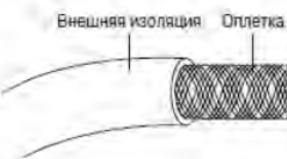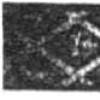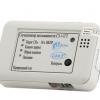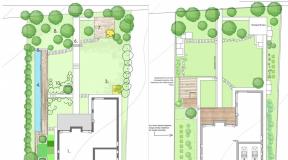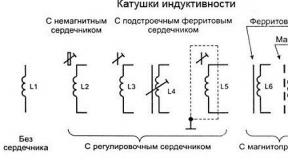What does an individual rehabilitation program look like? How can a disabled person get what is required according to Ypres. Self-selection of a Ypres performer by a disabled person
An individual rehabilitation program for a disabled person, a sample of which will be described below, is a set of measures aimed at restoring, compensating for lost or impaired body functions, as well as the ability to carry out certain types of activities. It is formed in accordance with the decision of the authorized body of the Ministry of Health. The IPR includes certain forms, types, volumes, procedures and terms of professional, health-improving and other measures. Let us further consider how the development of a rehabilitation program for the disabled is carried out, what activities it may include. The article will also describe some of the nuances associated with the execution of the IPR.
Since 2005, on the territory of Russia, a program for the rehabilitation of a disabled person has been drawn up according to a single form. It was approved by Order of the Ministry of Health and Social Development No. 287 dated November 29, 2004. The map consists of several parts. The rehabilitation program for a disabled person is formed taking into account information about the citizen. Accordingly, in the first part, information about him is indicated in detail. In addition to personal data, this section contains information:
- On the educational level (professional and general).
- Specialties, qualifications and labor functions performed at the time of the examination (if any).
- Disability group, degree of disability.
What does the sample program contain? Rehabilitation of the disabled includes key restorative and compensatory measures. Among them are medical events. As part of medical rehabilitation carried out:
- Recovery therapy.
- Reconstructive surgery.
- Orthotics and prosthetics.
- Provision of technical devices and facilities.
- Sanatorium-resort treatment (for non-working citizens).
The program of medical and social rehabilitation of the disabled includes:
- Consulting and informing on a set of measures taken.
- Legal support.
- Family patronage.
- Rehabilitation using the means of sports and physical education.
- adaptive learning.
- Provision of technical devices for social and domestic activities.
- Psychological help.
- Sociocultural rehabilitation.

Rehabilitation
The professional program for the rehabilitation of a disabled person is a system of measures aimed at returning the citizen's ability to work. It includes:
- Development of recommendations on contraindications and permissible types and conditions of activity.
- Career guidance.
- Vocational training or retraining.
- Assistance in job search.
- Provision of technical means.
Working with minors
The rehabilitation program for a disabled child includes psychological and pedagogical activities. These include:
- Obtaining preschool and school education and upbringing.
- Psychological and pedagogical corrective work.
- Provision of technical means for training.
In addition, the program for the rehabilitation of a disabled child provides for the patronage of the family in which he is. Specialists provide consultations, provide psychological assistance to parents.
Individual rehabilitation program for a disabled person: sample
The most important sections of the IPR are those in which psychological and pedagogical, medical measures, as well as services that provide assistance in restoring the professional competitiveness of a citizen in the labor market. Each of them has two parts. The first lists specific activities technical means that will be needed by the person. The second part contains information about the performers, forms, terms, the order in which the implementation of the individual rehabilitation program for a disabled person will be carried out, as well as the results obtained or the reasons for not receiving them. A sample form is provided in the article.
The rehabilitation program for a disabled person is drawn up in accordance with the decision federal agency ITU. In this regard, it is necessary to apply for a card to the organization that issues the certificate. This is usually the local division of the Bureau of Medical and Social Expertise (BMSE).

Social rehabilitation programs for people with disabilities represent a key mechanism for ensuring that the personal needs of citizens are taken into account and support is targeted. Today, the presence of the IPR card allows you to effectively solve many issues related to the implementation of compensatory and restoration measures. At the same time, the effectiveness of interaction with government officials is increasing at all levels. So, for example, higher education institutions require IPR when applying for training. Not a single citizen with a disability will be able to register with an employment center without an appropriate document. Consequently, without IPR it is impossible to get an education, get a job, get a new specialty.
In addition, the state program for the rehabilitation of disabled people provides for the possibility of obtaining the technical means necessary for adaptation. In addition, the document may indicate special conditions that are necessary for a particular person. This is especially important for citizens under the age of 18. An individual program for the rehabilitation and habilitation of a disabled child includes only those activities that are permissible for him, taking into account his psychophysiological state.
In accordance with the Regulations on the recognition of a citizen as a disabled person, the development of a program must be carried out within a month after the group and the degree of disability are established. However, in practice the following procedure applies. To get an IPR, you need to visit your doctor and ask him for a referral to the ITU. In addition, an application should be submitted to the Bureau of Medical and Social Expertise. It is issued in 2 copies. It is advisable to indicate the specific activities, services and funds that a citizen needs.
In order to most fully reflect all the needs for each section of the map, it is recommended to describe them on a separate application sheet. In this case, the text of the application should indicate a request to take into account this information. It is also advisable to attach recommendations of specialists or opinions of experts providing certain services to the document. This is necessary to form the most complete understanding of all the needs of a citizen and his rehabilitation potential among ITU employees.
You can apply for a card not only during the re-examination. The program of social rehabilitation of children with disabilities, as well as adults with handicapped, is compiled every year, even if the group is established without a re-examination period.

An individual program for the rehabilitation of a disabled person, the completion of which form must be carried out taking into account not only the recommendations of experts, but also the wishes of the citizen himself, is submitted to him for signature. He must put his autograph in each section of the map. So he expresses his agreement with the events indicated in it.
However, contradictions are not excluded. In such cases, the citizen writes in the signature field that he does not agree with the content of the card, and indicates the reasons. A person has the right to challenge the decisions and actions of the BMSE employees. The complaint is submitted to the main Bureau of the region. A copy of the card must be attached to it. After that, an examination is carried out, conversations are held with the citizen. Based on their results, a conclusion is made on the disputed points. If the citizen's claims are found to be justified, a new program is drawn up. It is signed by the chairman of the commission and certified by the GMBSE seal. The decision can also be challenged in the federal bureau within a month. In addition, the citizen has the right to apply to the court.
The volume of measures provided for in the IPR cannot exceed the Federal List of Technical Means and Services. A citizen or his representative may partially or completely refuse them. In this case, government agencies, local structures, as well as other organizations will be released from responsibility for the implementation of the program. In addition, the citizen will be deprived of the right to receive compensation.
Experts, however, urge not to rush to refuse. The Federal Program for the Rehabilitation of the Disabled is advisory, not mandatory. After signing the card, a citizen has the right not to apply to the relevant authorities and structures to receive certain funds or services. In this case, there is an opportunity throughout the entire period of its validity to change the initial decision and take advantage of state support.
Determining the subjects responsible for the implementation of certain items of the program is considered one of the key points in the design of the card. The executor must be indicated opposite each envisaged activity. The new form of IPR implies a special procedure for their determination. Previously, BMSE indicated the performers. Currently, the bureau includes only some of them in the map. For example, in the section on providing technical means, the contractor is indicated by the FSS authority. Subjects can also be indicated by the local structure of social protection.
It must be remembered that the key task of rehabilitation is to eliminate or, as far as possible, fully compensate for the limitations of life that have arisen as a result of disability. In this regard, the executors should choose those individuals or organizations that can cope with the tasks. It can be both public and private structures of any form of ownership.

The Federal Law governing the social protection of persons with disabilities in the Russian Federation establishes that if a service or technical device provided for in the rehabilitation program cannot be provided to a citizen or he paid for them with his own funds, he is entitled to full compensation of costs. The IPR may include activities both funded by the budget and those for which the person himself bears the costs.
In accordance with the law, only those services and facilities that are on the relevant list can be provided free of charge. It is approved by a government decree and does not include many positions. The state, therefore, assumes the obligation to pay for a minimum set of services and those. funds.
It should be noted that in a number of subjects of the Russian Federation there are regional regulations that significantly expand the list. Reimbursement of expenses should be carried out by the territorial divisions of the FSS. At the same time, it should be taken into account that the right to compensation is given only by documented contractual relations with the actual executors of the IPR. The citizen should provide evidence of payment for the service or technical support. facilities. An appropriate application is submitted to the FSS, to which copies of the IPR card and other documents are attached.
The application for reimbursement of expenses and the documents attached to it are considered no more than a month. If, at the end of this period, the citizen did not receive a response or was denied reimbursement, he can contact the higher structure of the FSS. If in this case his request was not satisfied, he has the right to apply to the court. Experts draw the attention of citizens to the fact that filing a lawsuit will not indicate that a citizen seeks to aggravate the conflict. In this case, such a reaction to injustice will allow government agencies to be involved in solving the problem, and responsible persons to realize their responsibilities. Along with this, you should be prepared for any outcome of the case.

The Russian Federation has the following legislative acts regulating the preparation and execution of IPR:
- Federal Law No. 181. Art. 11 of this law is fully devoted to the individual rehabilitation program. In addition, the IPR is indicated in Art. 8, 18, 19, 23, 29, 25, 32.
- Federal Law "On social protection of disabled people". This normative act defines the IPR, names the bodies responsible for its preparation, and specifies the basic rights of people with disabilities. The law establishes that a disabled person cannot be recognized as unemployed without an individual rehabilitation program for him. The normative act fixes the obligation of the responsible authorities to fulfill the IPR, as well as the possibility of a citizen to go to court if it is not fulfilled.
- Regulations on the recognition of a person with a disability.
- Government Decree No. 805 of 12/16/2004. It regulates the activities of FGU ITU.
- Order of the Ministry of Health and Social Development dated November 29, 2004
- Government Decree No. 1343-r dated October 21, 2004
After issuing an individual rehabilitation program card, a citizen or his representative, by law, seek help from a variety of organizations to implement the envisaged measures and obtain the necessary technical support. funds.
It should be said that at present the IPR execution mechanism cannot be called ideal. There are many gaps in the state support program itself. In this regard, in practice, citizens very often face all sorts of obstacles. Problems can appear at different stages - both at the time of drawing up a rehabilitation program, and in the course of carrying out the activities outlined in it.
Particular difficulty arises in the process of exercising the right to reimbursement of expenses incurred. In this case, it is advisable to enlist the support of a qualified lawyer. It is also important to have all the documents proving the fact of paying for the service or technical means with your own money. Conflicts related to the implementation of the rehabilitation program can be resolved both in claims and in court. The first involves appealing to higher authorities. With regard to judicial review, the practice in such cases is not sufficiently extensive today. However, it also contains precedents of won disputes on reimbursement of expenses incurred by a citizen and his relatives for rehabilitation measures.
It should be borne in mind that the issuance of an IPR card is currently mandatory. Another issue is that often not all services and those are prescribed in it. funds that a citizen needs, but only those included in the free list. Thus, the government is faced with the task of improving the mechanism for the implementation of rehabilitation programs.

IPR should be effective for a person. The rehabilitation program will become useful only if it is based not on the capabilities of the state, but on the actual needs of each disabled person.
Individual Rehabilitation Program (IPR)
However, not all disabled people are assigned to the local ITU regional offices. As a rule, visually impaired people are assigned to specialized ITU eye bureaus and should receive IPR there.
What does the IPR give to a disabled person?
At present, many aspects of the rehabilitation process are more effectively resolved and regulated with representatives of the authorities at all levels if the disabled person has an IPR. For example, now universities and colleges, when accepting documents from applicants with disabilities, always require an IPR; not a single disabled person can register with the labor exchange as unemployed without a completed IPR, including labor recommendations. This means that without an IPR it will be difficult to get an education, acquire a new profession for free, and then get a job. With the help of the IPR, you can get some of the technical means of rehabilitation you need, rehabilitation services, special conditions can be prescribed in the IPR, which should be created for you in the educational institution where you study or in the organization where you work.
In general, having an IDP tailored to you is one of the important mechanisms for dealing with your disability-related issues.
It should be noted that the state cannot always provide the rehabilitation service you need. The IPR contains both rehabilitation measures provided to a disabled person free of charge in accordance with the Federal List of Technical Means and Services Provided to a Disabled Person, and rehabilitation measures that are paid for by the disabled person himself or other persons or organizations, regardless of organizational and legal forms and forms of ownership.
Therefore, not only a state organization can be indicated as an executor in the IPR card. Moreover, the contractor must indicate the organization that will provide the necessary rehabilitation services in the best possible way. If you have already paid for rehabilitation services or purchased the technical rehabilitation equipment indicated in the IPR card, the state is obliged to reimburse your costs.
However, now in practice there is the following order.
To obtain an IPR, you need to contact your attending physician with a request to give a referral to the ITU Bureau.
Together with the referral of the attending physician, an application of the following form should be submitted to the ITU Bureau in two copies.
disabled person of ____group, living at the address: __________________________________________________
(zip code and address without abbreviations)
Please develop an individual rehabilitation program for me.
Date________________ Signature _________________
One copy of the application along with the referral is submitted to the ITU Bureau.
To be able to control the process of developing an IPR, the application should be duplicated. The second copy, which remains with the disabled person or his legal representative, must contain the following entry:
Documents for the development of the IPR were received by the ITU Bureau.
____________ ____________ ______________
Date Position Signature
It is useful to attach to the application the opinions of experts or recommendations of specialists who provide you with rehabilitation services, since often ITU specialists do not have complete information about your needs and sufficient qualifications to determine your rehabilitation potential.
Please note that you can contact the ITU Bureau for the development of an IPR not only during the recertification period. The IPR card is compiled annually, including in cases where disability is established without a re-examination period.
Although, in accordance with Decree of the Government of the Russian Federation of August 13, 1996 No. 965, ITU bodies are required to develop an IPR for each disabled person. However, sometimes BMSE specialists offer the parents of disabled children (or the disabled adults themselves) to sign a refusal to draw up an individual rehabilitation program, citing this step as inappropriate, ineffective rehabilitation or lack of technical means, services, material resources necessary for the implementation of the IRP. Such a requirement by the ITU bodies is illegal.
The decision of the GMBMS of the region can be appealed to the federal bureau within a month medical and social expertise and then to the Ministry of Health and social development.
The volume of rehabilitation measures provided for by an individual program for the rehabilitation of a disabled person cannot be less than that established by the Federal List of Technical Means Provided to a Disabled Person.
A disabled person (or his legal representative) may refuse the IPR as a whole or the sale of its individual parts. This releases the relevant public authorities, bodies local government, as well as organizations, regardless of organizational and legal forms and forms of ownership, from responsibility for its implementation and deprives the disabled person of the right to receive compensation in the amount of the cost of rehabilitation measures provided free of charge.
In accordance with the Law “On the Social Protection of the Disabled in the Russian Federation” (Article 11), the IPR “is mandatory for the execution by the relevant state authorities, local governments, as well as organizations, regardless of their organizational and legal forms and forms of ownership.” This means that state organizations and institutions whose status allows them to contribute to the implementation of the IRP do not have the right to refuse to implement it.
However, for the disabled person himself, in accordance with Art. 11 of this Law, the IPR is advisory in nature. This means that if you do not want to participate in events, receive services or technical means included in the IPR, you can refuse them.
However, less harsh tactics are also possible. Keeping in mind that for a disabled person, the IPR is not mandatory, but a recommendation, after signing the IPR card, you can simply not apply to organizations that provide rehabilitation services included in the IPR or issue technical means of rehabilitation. In this case, you reserve the opportunity during the term of the IPR to change your mind and exercise your legal rights.
Choice of IPR executor.
The key point when filling out the IPR card is the choice of its performers. The contractor is indicated in the column opposite each rehabilitation measure. In connection with the new form of IPR, the procedure for specifying the performer of a particular rehabilitation measure is slightly changing. Previously, the ITU bureau always indicated the performer, now the ITU indicates only a part of the performers, for example, when providing technical means for the rehabilitation of the performer, it indicates the executive body of the social insurance fund, and the performers of some activities are also indicated by the local social protection authority.
A disabled person or his legal representative should remember that the task of rehabilitation, in accordance with Art. 9 of the Federal Law “On the Social Protection of the Disabled”, is the elimination or possibly more complete compensation of life restrictions caused by disability. Therefore, as executors of IPR, one should choose those organizations or those individuals who will cope with the task in the best way. They can be both state and non-state organizations of any form of ownership.
Consider possible options participation of specialists of the ITU Bureau and people with disabilities (or their legal representatives) in the selection of IRP executors.
Typically, ITU bodies or another body, as executors of the IRP, propose one or a number of specific government agencies that, in their opinion, provide the necessary services or rehabilitation facilities. If you think that the organizations proposed by the ITU bodies can perform the IPR at the proper level, you can use the opportunity provided.
After completing a rehabilitation course or providing technical means, the organization performing the IPR makes a note on the implementation of activities in the IPR card.
IPR services are provided by state institutions to a disabled person free of charge.
However, the law reserves the right for you to choose the IPR executor instead of the institution proposed by BMSE.
2. IRP executors are not specific organizations, but institutions of a certain type.
ITU bodies or other bodies may name as performers not specific organizations, but organizations of a certain type that solve the problems of education or social rehabilitation for disabled people (for example, “social service center” or “school of ___ type”).
In practice, such organizations do not always take up the solution of the rehabilitation tasks assigned to them. Therefore, to begin with, it is possible (by registered letter by mail) to request potential contractors about the possibility of receiving services within the framework of the IPR based on them. If the organization appointed by the IPR executor is not able to provide the services you need, you can get a refusal from it (preferably in writing).
At the same time, you have the right to immediately choose any other organization as an IPR executor.
3. Self-selection by the disabled person of the IPR performer.
It is important to note that the refusal of the organization specified in the IPR as an executor is not a refusal of the set of measures recommended by the individual rehabilitation program: according to Art. 11 of the Federal Law “On the social protection of disabled people in the Russian Federation”, “a disabled person has the right to independently decide on the issue of providing himself with a specific technical means or type of rehabilitation.” It follows from this that the disabled person (or his legal representative) can choose the IPR executor at his own discretion. The criterion for choosing the executor of activities within the framework of the IPR is the possibility of complete implementation of the program with his help. Based on this, both a state and a non-governmental organization that is able to most successfully implement the program developed for you by the ITU bodies can become an IPR executor, regardless of whether it is included by BMSE specialists in the IPR map.
Coordination of the choice of the IPR executor with the ITU bodies.
The ITU bodies can agree with your arguments, take advantage of the recommendations received from independent experts and add the performers proposed by you to the IPR card.
However, in practice, specialists of the ITU bureau in a number of cases do not agree to assign responsibility for the implementation of the IPR to non-governmental organizations.
Regardless of the positive decision of the ITU bodies, you have the right to undergo a rehabilitation course recommended by the IPR in an institution that is right for you.
First of all, it should be noted that the IPR includes both rehabilitation measures that are provided free of charge (paid by the state) and those that are paid for by the disabled person himself. By law, those technical means and services that are included in the federal list of technical means of rehabilitation and services provided to the disabled are provided free of charge. This list was approved by the Government, and, unfortunately, its content is rather poor. After reviewing this document, we can say that the state undertakes to pay for the most minimal set of technical equipment and services. In some regions, regional programs for the rehabilitation of persons with disabilities have long been adopted. The technical means and services included in them are provided to disabled people free of charge at the expense of the region. Regional programs must be valid after January 1, 2005.
Receiving compensation for the costs of services within the framework of the IRP.
Let us recall once again that the right to compensation for the costs of implementing the IPR is given only by documented contractual relations with the real IPR executor, supported by proof of the fact of payment for rehabilitation funds and rehabilitation services. If the organizations (specialists) that provide you with paid rehabilitation services prefer to receive money without formalizing the relationship and do not pay for classes through the accounting department (or do not issue receipts for payment), the question of compensation for the expenses incurred by you by the social security authorities cannot be considered.
The interaction of persons with disabilities who are counting on legal compensation for the costs incurred in the process of implementing the IPR, and the FSS bodies should be accurate, clear and mutually correct. After the next rehabilitation period, you can apply to the territorial body of the FSS with an application for compensation, the form of which may be something like the following:
From _____________________ residing at:
(specify zip code and address)
Based on Art. 11 of the Federal Law “On the Social Protection of the Disabled in the Russian Federation”, I ask you to compensate for the expenses incurred by me as part of the implementation of the Individual Rehabilitation Program No. _____ issued by the BMSE No. ____ “__” ___________200, in the amount of ____________ rubles. _______ cop.
1. Copy of the IPR card.
2. Copies of contracts for the provision of services.
3. Copies of receipts (receipts) for payment for services.
The application can be left in the office of the FSS body, asking the employee who accepted it to sign the second copy and put down the incoming number. It is also possible not to visit the FSS organization in person, but to send the application and all necessary attachments by registered mail with acknowledgment of receipt.
If no response is received within a month or you receive a refusal to pay compensation, you can write a complaint to the higher body of the FSS.
Refusal to pay compensation by higher authorities completes the stage of interaction between the disabled person or his representative with the FSS on a voluntary basis. The next step towards obtaining compensation for the costs of implementing the IPR may be to go to court with a complaint about the inaction of the social insurance fund bodies and a demand to compensate legally incurred expenses by the disabled person or his parents.
Parents of a disabled child (or adults with disabilities) should understand that going to court does not indicate your desire to create a conflict situation. On the contrary, well-reasoned appeals of representatives of persons with disabilities to the court will help public service employees to pay attention to the problem and fully understand their statutory obligations.
Legislative acts regulating the formation and implementation of IPR.
For the first time, IPR, as, indeed, the very concept of “rehabilitation of the disabled” (Article 9) is mentioned in the Federal Law No. 181 “On the Social Protection of the Disabled in the Russian Federation” dated November 24, 1995. In addition to Art. 11 of this law, which is entirely dedicated to the Individual Rehabilitation Program, IPR is also mentioned in Art. 8 (“State Service of Medical and Social Expertise”), art. 18 (“Education and education of children with disabilities”), art. 19 (“Education of the Disabled”), art. 23 (“Working conditions for persons with disabilities”), art. 25 (“The procedure and conditions for recognizing disabled people as unemployed”), art. 29 (“Sanatorium treatment of the disabled”) and Art. 32 (“Responsibility for violation of the rights of persons with disabilities. Consideration of disputes”).
Also, the legal basis for the formation of the IPR is the regulatory documents adopted in order to implement the Federal Law on the social protection of persons with disabilities:
The legal basis for the implementation of the IPR, in addition to the norms of the Law on Social Protection of the Disabled, is
Regulations on the recognition of a person as disabled, approved. Decree of the Government of the Russian Federation of August 13, 1996 N 965,
1. Decree of the Government of the Russian Federation of December 16, 2004 No. N805 "On the procedure for the organization and activities of federal state institutions of medical and social expertise",
2. Order of the Ministry of Health and Social Development of the Russian Federation dated November 29, 2004 N 28 7,
3. Decree of the Government of the Russian Federation of October 21, 2004 N 1343-r, “Exemplary regulation on a rehabilitation institution” (appendix to the decree of the Ministry of Labor of Russia, the Ministry of Health of Russia, the Ministry of Education of Russia of December 23, 1996 No. 21/417/515).
There are also laws that establish some rights of people with disabilities, the implementation of which will help filling out the IPR:
1. Fundamentals of the legislation of the Russian Federation “On the protection of the health of citizens” (adopted by the Supreme Council of the Russian Federation on July 22, 1993);
After filling out the IPR card, a disabled person or his legal representative resort to help various organizations to carry out activities aimed at rehabilitation within the framework of the IPR.
The mechanism for implementing the IRP has not yet been worked out, therefore, in practice, obstacles to the individual rehabilitation of a disabled person arise at every step - from the moment the IRP is drawn up to the procedure for its implementation, including those related to the compensation of expenses for the rehabilitation of disabled people.
Issues related to the implementation of the IPR are resolved both in a contractual manner and in court. The established practice of adjudicating such cases does not yet exist, but there are already precedents of won cases on compensation for rehabilitation costs incurred by a disabled person or his family in Moscow and the Moscow Region.
It should also be remembered that now there is a tendency to fill out the IPR for each person with a disability, but the IPR does not prescribe all the services and technical means that a disabled person needs, but those that the state can provide. At the moment, it seems to us that people with disabilities should work to break this trend, because the IRP will be useful only when the needs of each individual person, and not the capabilities of the state, are taken as the basis for its development.
Official site for people with disabilities

The formation of an Individual Rehabilitation Program has been and remains one of the most pressing issues for people with disabilities. Now it is impossible for a disabled person to receive any rehabilitation services from the state if he does not have this document filled out. In the proposed brochure, we have tried to answer the most frequently asked questions related to the process of forming an IRP, with the structure of the Individual Rehabilitation Program card and what can be included in it.
Introduction
1. What is the rehabilitation of the disabled?
2. What is the Individual Rehabilitation Program for the Disabled?
3. Why does a person with a disability need an individual rehabilitation program?
4. How is the formation of an individual program for the rehabilitation of a disabled person?
5. What can be included in an individual rehabilitation program for a disabled person?
6. What can a disabled person do in case of contradictions with the Bureau of Medical and Social Expertise regarding the formation of an IPR?
7. What is the role of a person with a disability in the formation of an IPR for him?
8. For how long is an Individual Rehabilitation Program for a Disabled Person developed?
9. Who and how will implement the rehabilitation activities and services recorded in the IPR?
10. What will happen after the expiration of the IPR?
Legislative acts of the Russian Federation governing the formation of an Individual Rehabilitation Program
Participants of the project "Creating a model of employment for the disabled"
Introduction
The formation of an Individual Rehabilitation Program has been and remains one of the most pressing issues for people with disabilities. Now it is impossible for a disabled person to receive any rehabilitation services from the state if he does not have this document filled out. In the proposed brochure, we have tried to answer the most frequently asked questions related to the process of forming an IRP, with the structure of the Individual Rehabilitation Program card and what can be included in it. Particular attention is paid to the role of a person with a disability when interacting with employees of the medical and social expertise service. This is very important in order to achieve the fullest possible completion of the IPR and in the future to receive the full range of rehabilitation services. All material in this brochure complies with current Russian legislation as of May 1, 2006.
The brochure was issued within the framework of the project "Creating a model of employment for young people with disabilities", which has been implemented since February 2005.
The aims of the project are to promote an "equal", integrated approach to the employment of people with disabilities, as well as to motivate people with disabilities themselves to get decent jobs and improve their skills.
Organizations - participants of the project:
Regional Public Organization of the Disabled "Perspektiva", Moscow
Samara public organization of wheelchair users "Association" Desnitsa ", Samara
Togliatti City Public Organization of the Disabled "Center for Independent Life", Togliatti
Rostov City Public Organization of the Disabled "Phoenix", Rostov-on-Don
We would like to express our gratitude to Anna Gvozditskikh, lawyer at ANO Center for Social and Labor Rights, and Yana Borisova, lawyer at ROOI Perspektiva, for their help in preparing the material for publication.
1. What is the rehabilitation of the disabled?
Rehabilitation of disabled people - a system of medical, psychological, pedagogical, socio-economic measures aimed at eliminating or, if possible, more fully compensating for life restrictions caused by health problems with a persistent disorder of body functions. The purpose of rehabilitation is to restore the social status of a disabled person, to achieve material independence and social adaptation.
The implementation of the main directions of the rehabilitation of the disabled provides for the use by the disabled of technical means of rehabilitation, the creation of the necessary conditions for the unimpeded access of the disabled to the objects of engineering, transport, social infrastructure and the use of means of transport, communications and information, as well as providing the disabled and their families with information formation for the rehabilitation of the disabled.
Rehabilitation of disabled people consists of three rehabilitation programs: medical, professional and social.
Medical rehabilitation includes a set of measures aimed at restoring the health of a person with a disability: therapeutic treatments, reconstructive surgery, prosthetics and orthotics.
Vocational rehabilitation includes vocational guidance, vocational education, vocational adaptation and employment of a disabled person.
Social rehabilitation is a set of measures that should allow a person with a disability to fully integrate into public life. Social rehabilitation consists of social and environmental orientation and social adaptation.
2. What is the Individual Rehabilitation Program for the Disabled?
All people with physical or intellectual disabilities, despite the generic name "disabled", quite naturally have different opportunities for leading an active, independent life. It is impossible to compare the needs of a disabled person in a wheelchair and a blind person. And even within the same type of physical limitations, the interests, desires, needs and life aspirations of specific people differ greatly. Therefore, the return of every disabled person to a full life is individual process. To take into account all the features of the rehabilitation of each disabled person, the Individual Rehabilitation Program (IPP) was conceived.
Individual rehabilitation program for disabled people - developed on the basis of the decision of the authorized body that manages federal institutions of medical and social expertise, a set of rehabilitation measures that are optimal for a disabled person. It includes certain types, forms, volumes, terms and procedures for the implementation of medical, professional and other rehabilitation measures aimed at restoring, compensating for impaired or lost body functions, restoring, compensating the ability of a disabled person to perform certain types of activities.
An individual rehabilitation program for a disabled person contains rehabilitation measures provided to a disabled person with exemption from payment in accordance with the federal list of rehabilitation measures, technical means of rehabilitation and services provided to a disabled person. As well as rehabilitation measures, in the payment of which either the disabled person himself, or other persons or organizations, regardless of the organizational and legal forms and forms of ownership, take part.
The volume of rehabilitation measures provided for by an individual rehabilitation program for a disabled person cannot be less than that established by the federal list of rehabilitation measures, technical means of rehabilitation and services provided to a disabled person.
3. Why does a person with a disability need an Individual Rehabilitation Program?
Without a formed IPR, a disabled person cannot receive any rehabilitation services, technical means of rehabilitation and sanatorium treatment from the state. Also, without an individual rehabilitation program, a person with a disability will not be able to register with the employment service as an unemployed citizen, which means they will not be able to use vocational training services and receive unemployment benefits.
Educational institutions, together with the social protection authorities of the population and health authorities, provide preschool, out-of-school upbringing and education for children with disabilities, the receipt of secondary general education, secondary vocational and higher professional education by the disabled in accordance with the individual program for the rehabilitation of the disabled.
Disabled people employed in organizations, regardless of organizational and legal forms and forms of ownership, are provided with the necessary working conditions in accordance with the Individual Program for the Rehabilitation of a Disabled Person.
In order to apply to the federal state employment service for finding a suitable job, a disabled person must be recognized as “able-bodied” by a medical and social examination. This is marked by the establishment of an appropriate degree of limitation of the ability to work (SOSTD).
1 degree - the ability to perform labor activities, subject to a decrease in qualifications or a decrease in the volume of production activities, the inability to perform work in one's specialty;
2 degree - the ability to perform labor activities in specially created conditions using auxiliary means, and (or) a specially equipped workplace, with the help of other persons;
Grade 3 - inability or contraindication to work.
A person with a disability, in the absence of restrictions on the ability to work, may not be established at all (a kind of "zero" degree).
The degree of limitation of the ability to work also affects the size of the basic disability pension and compensation payments for canceled benefits. The highest social payments are provided with the third SOSTD, and with the "zero" degree, their volume is minimal.
Many people with disabilities do not have an established degree of disability to work. In this case, the amount of the previously mentioned state payments is tied to the disability group. At the same time, the first disability group is equated to the third degree of limitation of the ability to work, the second - to the second, and the third disability group to the first degree. But in the event that a person applies to the medical and social expertise service for a revision of documentation on his disability or for the formation of an Individual Rehabilitation Program, he will be assigned a degree of limitation of the ability to work and, in accordance with it, the indicated state social payments are revised.
For people who have been permanently disabled, this can be a difficult situation. For example, a disabled person of the first group now receives the maximum amount of social benefits and at the same time has the right to work. When applying to the service of medical and social expertise for the formation of an Individual Rehabilitation Program, he will be required to establish the degree of limitation of the ability to work. And, if the third SOSTD is established, then according to existing legislative acts, he will be recognized as a "disabled" citizen. And if the second degree of limitation of the ability to work is established, the disabled person will lose in the amount of the basic size of the disability labor pension and compensation payments for benefits (the difference in payments can be up to 1,500 rubles). Partially, the losses can be compensated by registering with the Employment Center and receiving unemployment benefits.
4. How is the formation of an individual program for the rehabilitation of a disabled person?
Now the formation of an Individual Rehabilitation Program occurs automatically at the initial or next examination for disability in an institution of medical and social expertise. If the disability group is established indefinitely, then you must contact the ITU service with a written application for the formation of an IPR.
Medical and social examination of a citizen is carried out in the bureau at the place of residence (at the place of stay, at the location of the pension file of a disabled person who has left for permanent residence outside the Russian Federation). In the case of an appeal by a disabled person against the decision of the bureau, as well as in the direction of the bureau in cases requiring special types of examination, a medical and social examination can be carried out at the main bureau of the ITU of the region or at the federal bureau of the ITU.
When forming an Individual Rehabilitation Program, a comprehensive assessment of the state of health is carried out, social position and rehabilitation potential of a person with a disability. Based on expert diagnostics and a rehabilitation forecast, measures, technical means and services are determined that allow a disabled person to restore impaired or compensate for lost abilities to perform household, social and professional activity. A medical and social examination can be carried out at home if a citizen cannot come to the bureau (main bureau, Federal Bureau) for health reasons, which is confirmed by the conclusion of the organization providing treatment and prophylactic assistance, or in a hospital where a citizen is being treated, or in absentia by decision of the relevant bureau. When conducting a medical and social examination of a citizen, a protocol is kept, which is then kept for 10 years.
To complete the section on medical rehabilitation, a person is sent for a medical examination to a local clinic or, if an inpatient examination is needed, to a hospital. If necessary, representatives of state non-budgetary funds, the Federal Service for Labor and Employment, as well as specialists of the relevant profile may participate in the conduct of a medical and social examination of a citizen at the invitation of the head of the bureau with the right of an advisory vote. They can help in selecting the necessary measures in the sections of social and vocational rehabilitation. A person with a disability or his legal representative (parent, guardian) has the right to participate in the development of an Individual Rehabilitation Program.
The generated card of the Individual Rehabilitation Program is signed by the head of the institution of the state service of medical and social expertise and the disabled person (or his legal representative), certified by the seal of the institution and handed over to the disabled person (or his legal representative). If a disabled person (or his legal representative) does not agree with the content of the IPR card, then they have the right not to sign the document. In this case, the Individual Rehabilitation Program is attached to the disability examination certificate and is not issued to the handicapped person (or his legal representative).
5. What can be included in an individual rehabilitation program for a disabled person?
The modern structure of the Individual Rehabilitation Program consists of the following activities, services, technical means of rehabilitation necessary to eliminate the causes, conditions and factors that cause disability:
Recovery therapy.
A record is made of specific types of rehabilitation therapy that a disabled person needs, indicating the form of their implementation (outpatient, inpatient, at home) in accordance with the conclusion of the federal institution MSE.
Reconstructive surgery.
A record is made of specific types of reconstructive surgery that a disabled person needs according to the conclusion of the federal institution of the ITU.
Prosthetic and orthopedic care.
An entry is made on specific types of prosthetics and orthotics that a disabled person needs according to the conclusion of the federal institution MSE.
A record is made of spa treatment with the prescription of the profile, frequency, season of recommended treatment, the period of sanatorium treatment, which the disabled person needs according to the conclusion of the federal institution MSE.
Technical means of medical rehabilitation.
An entry is made on the list of technical means of medical rehabilitation that a disabled person needs according to the conclusion of the federal institution of the ITU.
Medical and social patronage of a family with a disabled person.
Vocational Rehabilitation Program (for persons aged 14 and over)
Recommendations on available and contraindicated conditions and types of work.
A record of contraindicated production factors and working conditions, as well as the shown working conditions (including the need to create a special workplace) and exemplary types of work available for health reasons, according to the conclusion of the federal institution ITU.
Professional orientation.
An entry is made about the types of vocational guidance (professional information, professional counseling, professional selection, professional selection, etc.) that the disabled person needs according to the conclusion of the federal institution MSE.
Vocational training (retraining).
An entry is made about the profession (specialty) recommended for acquisition, the level of vocational training (primary, secondary, higher, postgraduate, additional professional training (retraining) and the form of education (full-time, part-time, evening, boarding, home), according to the conclusion of the federal institution ITU .
Assistance in employment.
A record is made of specific measures implemented in order to promote employment in accordance with the recommended working conditions (selection of a suitable workplace for employment, including for a quota workplace, organization of employment special programs promotion of employment, including promotion of self-employment) that a disabled person needs according to the conclusion of the federal institution ITU.
Technical means of rehabilitation for vocational training (retraining) or work.
An entry is made on the list of technical means of rehabilitation necessary to provide training activities, professional training, the labor process at the workplace and assistance on the way to and from the place of work, according to the conclusion of the Federal Bureau of ITU.
Social rehabilitation program
Informing and consulting on rehabilitation issues.
The entry "needs" or "does not need" is entered according to the conclusion of the ITU federal bureau.
Provision of legal assistance.
The entry "needs" or "does not need" is entered according to the conclusion of the ITU federal bureau.
Socio-psychological and socio-cultural patronage of a family with a disabled person.
The entry "needs" or "does not need" is entered according to the conclusion of the ITU federal bureau.
Adaptive training for the implementation of household and social activities.
A record is made about specific types of adaptation training (training in personal care skills, techniques and methodological methods of self-service, training in the use of technical means of rehabilitation, training in movement, organization of life, etc.) that a disabled person needs to carry out household and social activities, according to the conclusion of the federal - decisions of the ITU.
Technical means of rehabilitation for household and social activities.
An entry is made on the list of technical means of rehabilitation that a disabled person needs to carry out domestic and social activities, according to the conclusion of the federal institution MSE.
Psychological rehabilitation.
An entry is made on the types of psychological rehabilitation (psychotherapy, psychological correction, psychological counseling, etc.) that the disabled person needs according to the conclusion of the federal institution MSE.
Sociocultural rehabilitation.
A record is made of the need for information and counseling on issues of socio-cultural rehabilitation, assistance in interaction with cultural institutions, on the types of art shown for classes according to the conclusion of the bureau of the ITU federal institution.
Rehabilitation means physical culture and sports.
A record is made of the need for information and counseling on issues of physical culture and sports, training in physical education and sports skills, assistance in interaction with sports organizations, recommendations on the types of physical culture and sports shown for classes according to the conclusion of the ITU institution.
Program of psychological and pedagogical rehabilitation (for children under the age of 18)
Getting preschool education and training.
An entry is made about a specific type (kind) of preschool educational institution, which recommends receiving preschool education and training, according to the conclusion of the federal institution ITU.
Obtaining a general education.
An entry is made about the level of education (primary, secondary) indicating the type of educational institution (ordinary, general education, special group of an ordinary general education institution, special (correctional) general education, etc.) and the form of education (individual program, home education, distance learning, etc.). etc.), which a disabled child needs according to the conclusion of the federal institution ITU.
Psychological and pedagogical correctional work.
A record is made about the types of psychological and pedagogical correction that a disabled child needs (correction of the immaturity of higher mental functions, emotional-volitional disorders and behavioral reactions, speech deficiencies, relationships in the family, children's team, with teachers, the formation of motivation for learning, social skills, etc.), according to the conclusion of the federal institution ITU.
Technical means of rehabilitation for training.
An entry is made on the list of technical means of rehabilitation that a disabled child needs for education in accordance with the conclusion of an institution of the federal institution ITU.
Socio-pedagogical patronage of a family with a disabled child.
The entry "needs" or "does not need" is entered according to the conclusion of the ITU federal bureau.
The state guarantees disabled people to carry out rehabilitation measures, receive technical means and services provided for by the federal list of rehabilitation measures, technical means of rehabilitation and services provided to a disabled person at the expense of funds federal budget. The federal list of rehabilitation measures, technical means of rehabilitation and services provided to a disabled person is approved by the Government of the Russian Federation.
At the moment, the Federal list of rehabilitation measures, technical means of rehabilitation and services provided to a disabled person is as follows:
Rehabilitation activities:
Rehabilitation therapy (including drug supply in the treatment of the disease that caused the disability).
Reconstructive surgery (including drug provision in the treatment of the disease that caused the disability).
Spa treatment.
Prosthetics and orthotics, provision of hearing aids.
Provision of vocational guidance for disabled people (vocational training, retraining, advanced training).
Technical means of rehabilitation:
Support and tactile canes, crutches, supports, handrails.
Wheelchairs with manual drive (room, walking, active type), with electric drive, small-sized.
Prostheses, including endoprostheses, and orthoses.
Orthopedic shoes.
Anti-decubitus mattresses and pillows.
Devices for dressing, undressing and grasping objects.
Special clothing.
Special devices for reading "talking books", for optical correction of low vision.
Guide dogs with a set of equipment.
Medical thermometers and tonometers with speech output.
Light and vibration sound signaling devices.
Hearing aids, including those with custom made earmolds.
Televisions with teletext for receiving programs with closed captions.
Telephone devices with text output.
Voice devices.
Special means for violations of the functions of excretion (urine and colostomy bags).
Absorbent underwear, diapers.
Chairs with sanitary equipment.
Services:
Repair of technical means of rehabilitation, including prosthetic and orthopedic products.
Maintenance and veterinary care of guide dogs (by paying annual monetary compensation).
Provision of sign language translation services.
6. What can a disabled person do in case of contradictions with the Bureau of Medical and Social Expertise regarding the formation of an IPR?
In case of disagreement of the disabled person (or his legal representative) with the content of the formed Individual Rehabilitation Program (for example, not all the necessary technical means and rehabilitation services were included in the IPR), it is not necessary to sign it. In this case, the citizen (his legal representative) may appeal this decision within a month on the basis of a written application submitted to the bureau that conducted the medical and social examination, or to the main bureau. The bureau that conducted the medical and social examination of the citizen, within 3 days from the date of receipt of the application, sends it with all available documents to the main bureau. The main bureau, no later than 1 month from the date of receipt of the citizen's application, conducts his medical and social examination and, based on the results, makes an appropriate decision.
In the event that a citizen appeals against the decision of the main bureau, the chief expert in medical and social expertise for the relevant subject of the Russian Federation, with the consent of the citizen, may entrust the conduct of his medical and social expertise to another team of specialists from the main bureau.
The decision of the main bureau can be appealed within a month to the Federal Bureau on the basis of an application submitted by a citizen (his legal representative) to the main bureau that conducted the medical and social examination, or to the Federal Bureau.
The Federal Bureau, no later than 1 month from the date of receipt of the citizen's application, conducts his medical and social examination and, based on the results, makes an appropriate decision. Decisions of the bureau, the main bureau, the Federal Bureau may be appealed to the court by a citizen (his legal representative) in the manner prescribed by the legislation of the Russian Federation.
7. What is the role of a person with a disability in the formation of an IRP for him?
Today, the formation of an Individual Rehabilitation Program depends too much on subjective factors, which, first of all, include the ambiguity of assessments of disability criteria and the fact that many controversial issues regarding the interpretation of the needs of a disabled person in certain rehabilitation services and means of rehabilitation are not legally regulated. Almost everything is referred to the competence of employees of the service of medical and social expertise, and their qualifications and different attitudes towards similar problems even more create the possibility of various practical situations.
And here, the perseverance and legal literacy of a disabled person or his legal representative are very important and make it possible to ensure that the IPR is fully formed and becomes an effective tool in the entire further rehabilitation process.
Unfortunately, most people with disabilities are passive about their role in the formation of the Individual Rehabilitation Program and most often after a month they receive a ready-made document that does not take into account their real needs and desires. In order to avoid disputes in higher instances or in court over the result, in the form of an unsatisfactory IRP, we advise you to actively engage in this process even at the stage of formation of rehabilitation measures and services. First of all, you need to indicate to the employees of the medical and social expertise those rehabilitation services and technical means that you need. Ask that specialists from specialized institutions be involved in the process of forming sections on social and vocational rehabilitation, which in the future will be engaged in the implementation of the measures recorded in the IPR (the territorial body for social protection of the population and the federal state employment service). In some cases, you may need written opinions of independent experts on certain controversial issues. Employees of the medical and social expertise are not required to take them into account, but they will most likely take them into account, since in this case they will argue not with the disabled person himself (or his legal representative), but with other specialists in the field of rehabilitation of disabled people.
8. For how long is an Individual Rehabilitation Program for a Disabled Person developed?
The mandatory period for which an Individual Rehabilitation Program is being developed is not defined in the current legislation. Usually it is tied to the date of the next re-examination for disability and is two years for disabled people of the first group, one year for disabled people of the second and third groups, one or two years for the category of a disabled child (or until the age of 18). In any case, when forming the IPR card, the period for which it is valid must be determined, and after which a written conclusion must be made with an assessment of its results for all formed rehabilitation programs.
9. Who and how will implement the rehabilitation measures and services recorded in the IPR
Next to the activities indicated in the map of the Individual Rehabilitation Program, three columns are filled in about the deadlines for completion, the performer and the mark of completion:
the column "Due date" indicates the period (duration, multiplicity) during which the recommended rehabilitation measure must be carried out in accordance with the conclusion of the federal institution ITU;
in the column "Performer" in the relevant sections, an entry about the performer of the rehabilitation measure is signed by the head of the federal institution MSE (executive body of the Social Insurance Fund of the Russian Federation, territorial body for social protection of the population), which indicated the performer, and certified by a seal;
in the column "Completion mark" for the relevant sections, the entry "completed" or "not performed" is made by the organization indicated as the contractor, regardless of the organizational and legal forms and forms of ownership, signed responsible person of this organization and is certified by the seal.
An individual rehabilitation program for a disabled person is mandatory for execution by the relevant state authorities, local governments, as well as organizations, regardless of organizational and legal forms and forms of ownership.
An individual rehabilitation program is advisory in nature for a disabled person, he has the right to refuse one or another type, form and volume of rehabilitation measures, as well as from the implementation of the program as a whole. A disabled person has the right to independently decide on the issue of providing himself with a specific technical means of rehabilitation or type of rehabilitation, including wheelchairs, prosthetic and orthopedic products, printed publications with a special font, sound-amplifying equipment, signaling devices, video materials with subtitles or sign language translation, and other similar means.
Provided by individual programs
rehabilitation of the disabled, the technical means of rehabilitation provided to them at the expense of the federal budget and the Social Insurance Fund of the Russian Federation shall be transferred to the disabled for free use.
If the technical means of rehabilitation or service provided for by the individual rehabilitation program cannot be provided to the disabled person, or if the disabled person has purchased the appropriate means or paid for the service at his own expense, then he shall be paid compensation in the amount of the cost of the technical means of rehabilitation or the service that must be provided to the disabled person.
The decision to pay compensation is made by the authorized body on the basis of an application from a disabled person, a veteran or a person representing their interests, on reimbursement of expenses for the purchase of a technical rehabilitation device, prosthesis, prosthetic and orthopedic product, as well as on the basis of documents confirming these expenses.
Payment of compensation to a disabled person is carried out by the authorized body in the order of priority for the provision of technical means of rehabilitation, prostheses, prosthetic and orthopedic products by postal transfer or transfer of funds to the personal bank account of these persons (at their request).
The refusal of a disabled person or a person representing his interests to provide a technical means of rehabilitation, a prosthesis, a prosthetic and orthopedic product, recommended individual rehabilitation programs, as well as the acquisition by him of a technical means of rehabilitation, a prosthesis, a prosthetic and orthopedic product that are not recommended by individual rehabilitation programs, does not give disabled person's right to compensation.
10. What will happen after the expiration of the IPR?
At the end of the term for the implementation of the IPR, a written conclusion is made with an assessment of its results for all formed rehabilitation programs, which in the map of the Individual Rehabilitation Program looks like this:
Evaluation of the results of medical rehabilitation:
Compensation of lost functions has been achieved (full, partial), impaired functions have been restored (completely, partially), there are no positive results (underline as necessary).
Evaluation of the results of professional rehabilitation:
a new profession was obtained, qualifications were improved, the level of general (professional) education was increased, a suitable workplace was selected, a special workplace was created, employment (full-time, part-time) was provided, there are no positive results (underline as necessary).
Assessment of the results of social rehabilitation:
the ability to self-service has been achieved (full, partial), the possibility of independent living has been achieved, integration into the family and society has been ensured, there are no positive results (underline as necessary).
Evaluation of the results of psychological and pedagogical rehabilitation:
the motivation for learning was restored (compensated), the function of communication and control over one's behavior was restored (compensated), the motivation for gaming (labor) activity was restored (compensated); the possibility of obtaining primary, secondary, higher vocational education, obtaining a profession has been implemented, there are no positive results (underline as necessary).
Special notes on the implementation of the IPR:
(additional information about the results of the implemented rehabilitation measures is entered)
Based on the conclusion and evaluation of the results of the implemented IPR, a new Individual Rehabilitation Program is being drawn up, which should allow the rehabilitation process of a person with a disability to be taken to a new level.
Legislative acts of the Russian Federation regulating the formation of an Individual Rehabilitation Program.
1. Federal Law of November 24, 1995 N 181-FZ "On the Social Protection of Disabled Persons in the Russian Federation" (as amended on July 24, 1998, January 4, July 17, 1999, May 27, 2000, June 9 , August 8, December 29, 30, 2001, May 29, 2002, January 10, October 23, 2003, August 22, December 29, 2004, December 31, 2005)
2. Decree of the Government of the Russian Federation of February 20, 2006 N 95 "On the procedure and conditions for recognizing a person as disabled"
3. Order of the Ministry of Health and Social Development of the Russian Federation of October 20, 2005 N 643 "On approval of the forms of documents on the results of the establishment by federal state institutions of medical and social expertise of the degree of loss professional working capacity as a percentage and recommendations for filling them out"
4. Decree of the Government of the Russian Federation of December 31, 2005 N 877 "On the procedure for providing disabled people with technical means of rehabilitation and certain categories of citizens from among veterans with prostheses (except for dentures), prosthetic and orthopedic products at the expense of the federal budget"
5. Decree of the Government of the Russian Federation of December 31, 2005 N 877 "On the procedure for providing disabled people with technical means of rehabilitation and certain categories of citizens from among veterans with prostheses (except dentures), prosthetic and orthopedic products at the expense of the federal budget."
6. Decree of the Government of the Russian Federation of August 22, 2005 N 535 "On approval of the classifications and criteria used in the implementation of medical and social examination of citizens by federal state institutions of medical and social examination."
7. Decree of the Government of the Russian Federation of December 16, 2004 N 805 "On the procedure for the organization and activities of federal state institutions of medical and social expertise"
Instructions for applying for an IPR program and receiving compensation TERMINOLOGY.
IPR - individual rehabilitation program.
ITU - medical and social expertise.
FSS - Social Insurance Fund.
TSR - Technical means of rehabilitation.
PROCEDURE FOR ISSUING IPR.
1. To obtain an IPR, you must contact the clinic to the attending physician (or to the deputy head physician for expertise) at the clinic at the place of residence, where they will issue a mailing list in the form 088 / y.
You need to take with you: passport, certificate of disability, insurance policy.
2. The deputy head doctor for examination will give you (or your representative) a sheet (form 88) with which you will need to go around several doctors (take blood and urine tests, do an ECG, fluorography, go to see a therapist and a neurologist).
3. At the appointment with a neurologist, to the question "what technical means of rehabilitation do you need?", you must list the TMR you need.
4. After all the doctors have been bypassed, you must again contact the deputy head physician for examination, so that he stamps and then contact the ITU bureau with the documents received. It can be located both in the clinic building and outside it. The address of the ITU can be clarified with the deputy head physician for examination at the polyclinic at the place of residence.
5. After submitting the documents to the ITU, within two weeks you should receive the IPR program in your hands.
PROCEDURE FOR OBTAINING COMPENSATION FOR TSW.
Compensation is made only for self-acquired technical means of rehabilitation specified in the individual rehabilitation program, and included in the Federal List of Rehabilitation Measures, Technical Means of Rehabilitation and Services Provided to a Disabled Person, approved by Decree of the Government of the Russian Federation dated December 30, 2005 No. 2347-r. For this you need:
After receiving the IPR program, you must go to the FSS and register the IPR program, after which you should receive a written notification from the FSS within 2-3 weeks that the IPR program has been registered.
Further, having a notice of IPR registration in hand, buy the necessary TSR for your own funds as follows:
Select a specialized store.
1. After purchasing the TCP, you must go to the FSS and take 2 copies. application form for compensation, fill it out and attach the following documents to the application:
a. Cash and sales receipt
b. Passport for TSR
c. Certificate
d. Copies of registration documents of the organization that sold you the TSR.
e. Savings book. Since the money will be transferred to the savings book of the disabled person, or open a savings bank account to transfer compensation to it.
2. Take the application and all documents to the FSS, register them and be sure to take a copy of the application marked by the FSS for yourself. Bring your passport and IPR program with you.
3. According to Decree of the Government of the Russian Federation of April 7, 2008 N 240, paragraph 14, compensation payments are made within a month, therefore, approximately 25 days after filing an application for compensation, call the FSS and clarify the payment terms. We wish you all success.
People with disabilities need certain conditions to lead a full life. These conditions can be provided by an individual program for the rehabilitation and habilitation of a disabled person - IPRA. It is a tool that gives people with diseases an advantage. It includes a register of events necessary for a person, specialized things and services. It is issued by a state organization (FGU BMSE) after a person has a disability.
This program is able to restore and improve health. It includes various activities, technical means of rehabilitation (RTD), services that contribute to leading a full life. These measures are implemented at the expense of the state.
IPR cards are documents that reflect the needs of the patient. Compiled on the basis of standards, legal acts of medical and social expertise (ITU). All procedures and activities noted in them are carried out exactly at the appointed time.
IPR of a disabled child and a mature person have slight differences. For example, the program for children provides for family patronage. Additional work is carried out with parents (guardians): they consult, provide psychological assistance.
General provisions
The map was developed based on many federal laws, regulations and combines some areas. In Russia, the IPRA form dated July 31, 2015 is relevant. At the beginning of the document, the personal data of a citizen are displayed, consisting of several parts:
- in the first - information about a person (personal data), his education (general and professional);
- in the second - data on professional activity, specialty, qualifications and positions;
- the third part informs what group of disability a person has, what are the contraindications for work.

Also, an item for additional information has been added to the IPR program for the disabled. It is designed for:
- guardians;
- people without citizenship;
- people who moved from the Russian Federation;
- homeless citizens.
Nearby, information about the period during which it is valid is displayed. The conclusion is written (it is the basis for the formation of the map).
The following section describes in detail the existing types of rehabilitation.
approved form
There is a single form of IPRA. It was approved by Order No. 287 of November 29, 2004 of the Ministry of Health and has been in force in the Russian Federation since 2005. It includes several sections describing the types of rehabilitation.
- Medical rehabilitation is the most significant. Its purpose is to ensure the restoration and compensation of certain functions of the body. And it is divided into points:
- therapy (designed to restore the functions of the body);
- surgery using reconstruction techniques;
- prosthetics and orthotics;
- supply of TCP;
- sanatorium treatment of unemployed patients.
- Social rehabilitation. Her work:
- informing and consulting on rehabilitation;
- providing legal assistance;
- family patronage;
- adaptation in society and life;
- release of TCP;
- conversation with a psychologist;
- sociocultural measures;
- sports exercises and recreational physical education.
Are you satisfied with the quality of the implementation of measures developed by the executive bodies of state power (or their subordinate institutions) provided for by the IPRA of a disabled person?
Poll Options are limited because JavaScript is disabled in your browser.
08.12.2018
- Professional rehabilitation. Performs the functions:
- recommends suitable working conditions and issues instructions on them;
- recommends career guidance;
- provides training (retraining);
- helps to employ a person;
- provides the TSR necessary during study or work.
- Psychological and pedagogical, intended for minor children.
Activities used:
- education and training of preschool children is provided;
- sick children receive general education;
- teachers - psychologists carry out corrective work with young patients;
- provided by TSR during studies.
Why is a map needed?
The rehabilitation program for the disabled reflects all his needs. She fully informs where and how to get help. Solve all issues related to the restoration and compensation of the victim. Still, this is an important link in the bureaucratic apparatus. Without it, a person with disabilities cannot be registered at the employment center. The absence of a card prevents a person from learning, getting a specialty, and getting a job.

The rehabilitation program of the state assumes that patients receive the necessary TC. If a disabled person does not have an IPR, then he is deprived of these opportunities.
Registration procedure
If a person has a disability group for a long time, has passed the examination, re-examination procedure, then he does not need to write an application for a card. The commission automatically generates an individual program. That is the established order.
If disability is issued for the first time, then the card is issued as follows:
The disabled person takes from the attending physician (surgeon, orthopedist or other doctor) a referral for examination. This is certificate No. 088 / y-06.
ITU members, on the basis of the referral, issue an application (2 copies). Documents required for registration:
- statement;
- passport (if the applicant is a child, then his birth certificate, passport of the legal representative is required);
- certificate No. 088/u-06;
Important! It is necessary that the attending physician fully prescribes all the necessary rehabilitation measures.
The completed form is accepted and fixed. Appoint the day of the commission.

All documents listed above will be required for examination. In addition to them, you need to convey:
- all medical papers (card, pictures, extracts, etc.);
- if the patient works, a copy of the work book is needed;
- education papers;
- information about working conditions, about the specifics of work;
- characteristics from the place of study;
- certificate of disability (if any);
- IPR (if issued earlier).
After the examination, the doctors make a conclusion. Based on this decision, a program is formed.
Sample Fill
The application contains several items:
- addressee's name (ITU bureau);
- applicant's data (name, address, telephone number);
- a statement of the essence of the application (“I ask you to develop a program for me ...”);
- date of submission of the application, signature (signature of a representative is possible);
- the paper must have a visa and the signature of the employee who accepted the application indicating the position, number.

Rehabilitation card for a disabled person of 1,2,3 groups
A card for disabled people of groups 1, 2, 3 is made 30 days (from the moment the disability was assigned). It looks something like this:
IPRA. Issued by FGU ITU.
- Map No. ... dated 10.10.2013.
- When was born (date).
- Residence address.
- Phone number.
- Group - 1,2,3.
- Ability limitations.
- How did the disability come about?
- Information for rehabilitation.
Below is a list where abilities are noted (for movement, self-service, communication, learning, and others).
- IPR issued for the first time or repeatedly. Valid until ... (number).
- Carrying out the next certification (number).
- IPR issued on (date).

Then a list of all types of rehabilitation intended for the patient is indicated. Their timing. The executor of the events is indicated. Marks are made of completed (non-completed) measures.
Below is a register of TCPs needed by a person.
Reference. All paragraphs in which it is necessary to indicate the period for the implementation of measures must contain the beginning and end of their implementation. Or there should be an entry "indefinitely".
When a person is given this document, he must carefully read it. To study all the proposed activities, technical means of rehabilitation. If everything suits you, then you can put a signature.



If something does not suit a person, you can not sign. You must specify the reason for the rejection.
The commission's experts finalize the document, taking into account objections (for citizens of all disability groups).
If the patient once again expresses dissatisfaction with the proposed program, then he can go to court. There he can appeal the doctors' verdict on the proposed program.
Where to get an IPRA if you have a disability
Today, an individual program for children with disabilities (and adults) can be obtained from the Bureau of Medical and Social Expertise (BMSE), to which the sick person belongs. In any district clinic there is a specialized department involved in its creation.
You can apply for a card for children for one or two years, or until the age of 18. The new program includes all rehabilitation measures necessary for the patient. If there is a need to enter additional information or you need to redo the existing data, then you need to go through an examination again to update the information.
IPRA certificate for a disabled person - where to get it?
According to the “Rules for Recognizing a Person as Disabled” (Decree of the Government of the Russian Federation of February 20, 2006 No. 95): “A citizen recognized as disabled is issued a certificate confirming disability, indicating the group.”
This certificate, like the map, is issued by the expert Bureau after the ITU commission.
IPRA of a disabled child
The IPR of a child with a disability differs little from the approved form of the IPR of an adult (previously, a sample of filling out an adult's card was presented). The map contains the same items. It is developed and issued by the federal government agencies of the ITU after a comprehensive examination.

In the new form of the individual rehabilitation program for a disabled child for children, updates appeared in accordance with the Order of the Ministry of Labor of the Russian Federation of 01/01/2016 (that is, if a disabled person draws up a card, for example, in 2017, then it is called "IPRA", and not " YPRES").
- Also, there was an article containing health promotion activities - physical education, sports.
- Section with a list of TCP.
This list of TCP contains 2 more subsections:
- services and TSR financed by the federal budget;
- services and TSR allocated by local authorities or purchased with the money of the sick person, third-party organizations.
- List of various services (social, transport and others). This item is open, that is, individually necessary types of assistance are entered into it.
Reference. The listed list is provided by the state for free. Items 1-3 are also presented in the program of an adult.
- Measures of professional rehabilitation. Previously, this item was only on the map of an adult with a disability.
The teenager's rehabilitation program is also drawn up in duplicate. One of them is given to the patient or his legal representative.

Rehabilitation card for a disabled child
There are several types of rehabilitation.
- Children undergo adaptation in the same conditions in which they were before the award of disability.
- Therapeutic preventive measures take place in new conditions.
- Social adaptation (SA) is carried out in a special medical institution.
Children are treated only after the development of an individual program. It is developed by ITU doctors, taking into account all the characteristics of the patient. The main task of rehabilitation measures is to restore the health of minors. To do this, the experts:
- determine its potential;
- evaluate the dynamics of the patient's development;
- identify the need for a particular treatment;
- create an individual program for a minor citizen.
In society, the interests of children with disabilities occupy a priority place. Because, exactly in early age, you can fruitfully correct diseases, cure small patients. The state guarantees the fulfillment of its obligations to children with disabilities.
IPRA of a disabled child at school
BMSE experts develop an individual rehabilitation program and send an extract from the card to the education department.
The Department of Education begins to operate after receiving an extract:
- prepares a list of necessary measures for a small patient;
- appoints the person who will monitor the implementation of activities in the school or kindergarten;
- transfers this list to the appointed person (performer);
- periodically receives a report on the work done from the contractor;
- redirects the report to BMSE.

School (or kindergarten):
- fulfills the requirements of the registry, which can be implemented in an educational institution;
- prepares a report for the pedagogical and psychological center for medical and social (PMS) assistance.
Report on the IPRA of children with disabilities in preschool educational institutions
It is paper that looks like this.
Let's take an example.Accounting for the implementation of rehabilitation measures
Name of the patient ____________________________________________
Class_______________________________________________
Program number, valid (from what date, to what) __________
Received register (number)__________________________________
Passed the statement (number) __________________________________
Name of parent, guardian __________________________________
Contact number ______________________________________
Then the classes conducted with the disabled are indicated:
- conversation of the patient and his family with a doctor-psychologist;
- psychological and pedagogical correction (PPC);
- PPC in the learning process.
Also, data on the completed classes are recorded, a number is put.
At the end of the report, the contact details of the school or kindergarten, work schedule, contact phone number and last names (s) of people performing work with a sick ward.
Registration card of a child with a disability at school
The program of sick children at school looks similar. She has some additions, stated:
- adapted education;
- special pedagogical training.
The report has a social section where some points are described in detail:
- with whom the patient lives;
- whether the family is complete;
- Name of parents, place of work and other data;
- the number of children in the family;
- family income;
- relationship between parents;
- who deals with the sick at home, does homework;
- what is the behavior of the patient at home;
- daily regime;
- what leisure.

In the final part, the performers (who implements the recommended program activities) must be indicated. Signatures and date are put (including, this column is filled in by the class teacher).
Conclusion
IPRA is needed by every citizen who has serious health problems. With its help, a disabled person can change his life for the better (if you follow the list of doctors' recommendations, undergo treatment):
- determine a treatment plan for yourself;
- achieve positive changes in the fight against the disease;
- improve your well-being;
- adjust the treatment program;
- receive state benefits, payments;
- will be able to fully recover.
All measures of the program are applied to form a full-fledged life of people. So that they do not experience discomfort in society, have the opportunity to study, work, despite their physical disabilities and illnesses.

